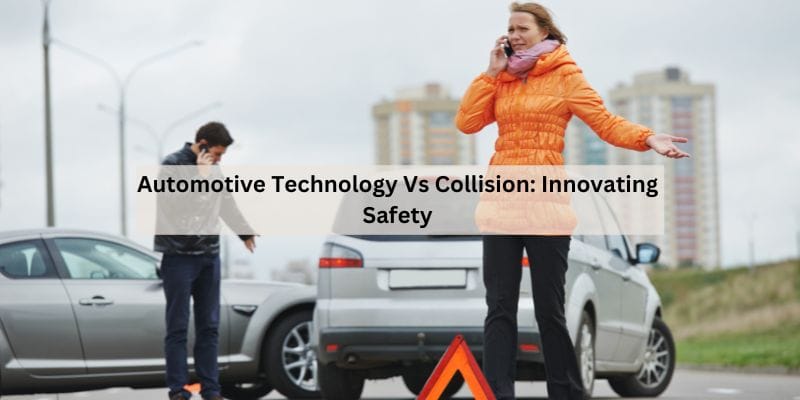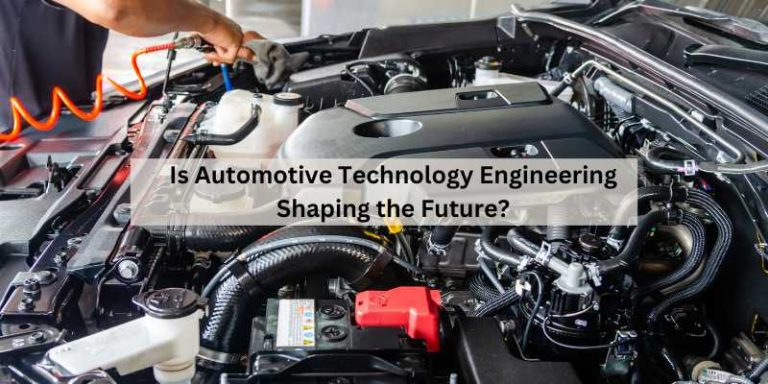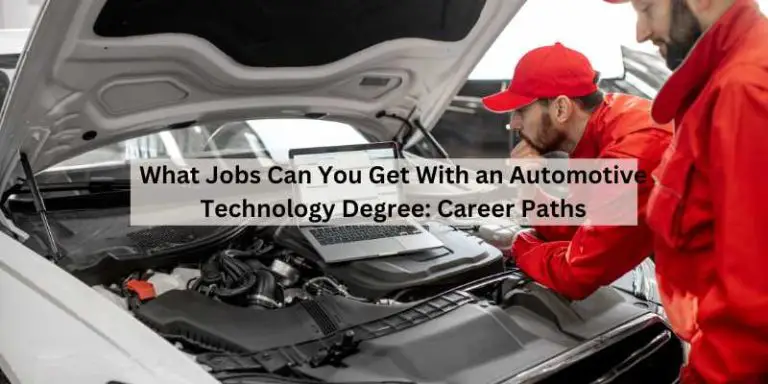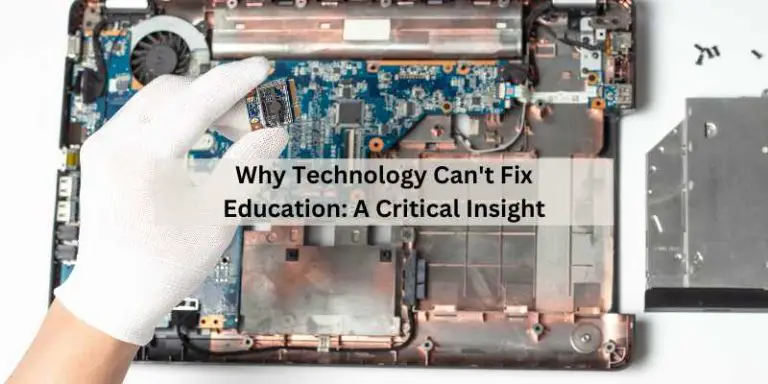Automotive Technology Vs Collision: Innovating Safety
Automotive technology and collision repair are two distinct fields within the automotive industry. Automotive technology primarily focuses on the electrical side of vehicles, while collision repair deals with repairing and restoring vehicles involved in accidents.
Automotive technicians in the technology field use their knowledge of computer systems and specialized diagnostic equipment to perform repairs, while collision repair technicians specialize in procedures such as frame reconstruction and body repair. The main difference lies in the nature of the work, with automotive technology being more focused on electrical systems and collision repair being more specialized in repairing accident-damaged vehicles.
The Evolution Of Automotive Safety
The evolution of automotive safety has seen significant advancements in recent years. Early innovations in automotive technology focused on basic safety features such as seatbelts and airbags. However, 21st-century advancements have introduced sophisticated systems like autonomous emergency braking and lane departure warning. These technologies have revolutionized collision prevention and driver protection, reducing the risk of accidents and injuries on the road. The integration of automotive technology with collision repair has also streamlined the process of restoring vehicles to their pre-accident condition, ensuring optimal safety and performance. As automotive technology continues to evolve, it will undoubtedly play a crucial role in enhancing collision avoidance and mitigation, ultimately making our roads safer for everyone.
Collision Dynamics And Impact
Automotive technology and collision dynamics are interconnected through vehicle design and passenger safety. The impact of a collision is influenced by various factors, including vehicle speed, weight, and angle of impact. Understanding the physics of crashes is crucial for developing safety features and improving vehicle design. Collision repair technicians play a vital role in restoring vehicles to their pre-collision condition, ensuring the structural integrity and safety of the repaired vehicle. Automotive technology, on the other hand, focuses on advancing vehicle systems, electronic controls, and driver-assistance technologies to prevent collisions and minimize impact severity. Both fields contribute to enhancing vehicle safety and reducing the risk of injury during crashes.
Automotive Technology: A Shield Against Collisions
Automotive technology serves as a shield against collisions, utilizing advanced features such as collision detection systems, automatic braking, and lane departure warnings to prevent accidents. By integrating these technologies into vehicles, the risk of collisions and their resulting damages can be significantly reduced.
| Automotive Technology: A Shield Against Collisions |
| Automotive technology has come a long way, and with the advancements in active safety features, it has become a shield against collisions. These features include lane departure warning, adaptive cruise control, blind-spot monitoring, and forward collision warning, among others. They are designed to prevent collisions by alerting the driver and taking control of the vehicle if necessary. On the other hand, passive safety systems such as airbags and seatbelts are designed to protect the occupants of a vehicle in the event of a collision. While both active and passive safety systems are important, the former has become increasingly crucial in preventing collisions and reducing the severity of accidents. |
Role Of Sensors And Cameras
Automotive technology and collision detection systems play a crucial role in enhancing vehicle safety. The use of sensors and cameras enables proximity detection, allowing the vehicle to sense nearby objects and alert the driver. Additionally, these systems facilitate lane departure and collision avoidance by providing real-time warnings and corrective actions. The integration of advanced technologies in automotive design has significantly reduced the risk of collisions and improved overall driving experience.
Material Science In Collision Safety
Material science plays a crucial role in collision safety within the automotive technology field. By understanding the properties and behavior of different materials, engineers can design vehicles that effectively absorb and dissipate impact energy, protecting occupants during collisions. This knowledge helps improve the overall safety of vehicles and reduce the risk of injury.
| Material Science in Collision Safety |
| When it comes to automotive technology and collision safety, material science plays a crucial role in ensuring the safety of passengers in the event of a collision. One of the major debates in the field of material science is the use of high-strength steel versus aluminum. While high-strength steel is known for its durability and affordability, aluminum is preferred for its lightweight properties. Additionally, the use of composites in crash energy management has gained popularity due to its ability to absorb energy during a collision and reduce the impact on passengers. Overall, the selection of materials used in automotive technology and collision safety is a delicate balance between strength, durability, affordability, and weight. |
Autonomous Vehicles And Collision Reduction
Autonomous vehicles have the potential to greatly reduce collisions on the road. By utilizing advanced automotive technology, these vehicles can navigate and respond to their surroundings with precision, minimizing the risk of accidents caused by human error. With collision reduction as a primary goal, autonomous vehicles are revolutionizing the automotive industry.
| Autonomous Vehicles and Collision Reduction |
| Self-driving technology |
| Self-driving technology has been developed to reduce collisions on the roads. Autonomous vehicles are equipped with sensors and cameras that can detect obstacles in their path and react accordingly. They can also communicate with other vehicles on the road, which helps to reduce the risk of collisions. In addition, self-driving technology can help to eliminate human error, which is a major cause of accidents. With autonomous vehicles, there is less risk of distracted driving, speeding, and other reckless behaviors that can lead to collisions. |
| Real-world impact on safety |
| The real-world impact of self-driving technology on safety is yet to be fully realized. However, studies have shown that autonomous vehicles have the potential to reduce collisions on the roads. For example, a study by the National Highway Traffic Safety Administration found that autonomous emergency braking (AEB) systems can reduce rear-end collisions by up to 50%. As self-driving technology continues to evolve and become more widespread, it is expected that the number of collisions on the roads will decrease, making our roads safer for everyone. |
Crash Testing And Standards
Improving safety through testing is a crucial aspect of automotive technology and collision standards. Regulatory bodies such as NHTSA and IIHS play a pivotal role in establishing and enforcing safety protocols for vehicles. Crash testing evaluates the performance of vehicles in various collision scenarios, providing valuable data for enhancing safety features. Standardized testing ensures that vehicles meet minimum safety requirements, contributing to reduced injury risks for occupants. Continuous advancements in testing methodologies and standards drive the development of innovative safety technologies in the automotive industry.
The Human Factor In Automotive Collisions
|
Automotive technology and collision are two different aspects of the automotive industry that play a significant role in road safety. Driver behavior and technology are the two factors that impact the likelihood of collisions. Educational programs and safety measures can help reduce the risk of accidents on the road. |
Future Of Collision Safety
Automotive technology and collision safety are evolving rapidly. Innovative safety technologies are on the horizon, with predictive analytics playing a crucial role in collision prevention. These advancements are set to revolutionize the future of collision safety, making vehicles safer for drivers, passengers, and pedestrians alike. With the integration of advanced sensors and artificial intelligence, vehicles will be able to anticipate and prevent potential collisions, ultimately reducing the risk of accidents and enhancing overall road safety. As automotive technology continues to progress, the implementation of these cutting-edge safety features will undoubtedly play a pivotal role in mitigating the impact of collisions and saving lives on the road.
Repairing The Aftermath: Collision Repair Technology
Automotive technology and collision repair have seen significant advancements in recent years. Modern repair techniques have revolutionized the industry, allowing for more efficient and effective repairs. Training for collision repair professionals has also evolved to encompass the latest technologies and methods. Collision repair now involves a more specialized discipline, focusing on procedures such as frame reconstruction and body repair. Auto body repair technicians require intense attention to detail and the ability to work materials to their natural state. The difference between automotive mechanics and collision repair technicians lies in the hands-on nature of mechanics’ work compared to the specialized, more technology-based approach of collision repair professionals.
Frequently Asked Questions
What Is The Difference Between Automotive Technology And Automotive Mechanics?
Automotive technology focuses on the electrical side, while automotive mechanics perform hands-on work and routine services. Technicians use computer systems and diagnostic equipment, while mechanics repair visible parts like brakes and engines. Auto body shops specialize in fixing the body, while repair shops handle mechanical components.
Collision repair is a specialized discipline that involves frame reconstruction and body repairs.
What Is The Difference Between Auto Body Technician And Mechanic?
Auto body technicians focus on repairing and restoring the body of a vehicle, including frame reconstruction and fixing visible parts like doors and bumpers. Mechanics, on the other hand, primarily work on the mechanical aspects of a vehicle, such as the engine, brakes, and wheels.
Auto body shops have painting facilities, while mechanic shops have tools for repairing hidden parts.
What Is The Difference Between Automotive And Auto Body?
Automotive and auto body have different focuses. Automotive repair shops handle engine components and mechanical repairs, while auto body shops specialize in fixing the body of the vehicle, such as the frame, doors, and windows. Auto body shops also have painting facilities, which are not typically found in automotive repair shops.
What Is The Difference Between Mechanics And Technology?
Automotive technology focuses on electronic aspects, while mechanics handle hands-on work and routine services such as oil changes and brake repairs. Collision repair is a specialized discipline that involves frame reconstruction and body repair. Automotive technicians use computer systems and diagnostic equipment for repairs.
Conclusion
The difference between automotive technology and collision repair lies in their areas of focus. Automotive technology involves working with computer systems and specialized diagnostic equipment, while collision repair is more specialized in procedures such as frame reconstruction and body repair.
Both fields require attention to detail and technical skills, but they cater to different aspects of the automotive industry. Whether you choose to pursue a career in automotive technology or collision repair, both offer unique opportunities for growth and specialization in the ever-evolving world of automotive technology.







